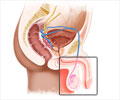Warning signs for dementia have been revealed by blood test through levels of certain microRNAs that indicate the cognitive decline and its risks.

‘Warning signs for dementia have been revealed by blood test through levels of certain microRNAs that indicate the cognitive decline and its risks.
’





“When symptoms of dementia manifest, the brain have already been massively damaged. Presently, diagnosis happens far too late to even have a chance for effective treatment. If dementia is detected early, the odds of positively influencing the course of the disease increase. We need tests that ideally respond before the onset of dementia and reliably estimate the risk of later disease. In other words, tests that give an early warning. We are confident that our current study results pave the way for such tests,” says André Fischer, research group leader and spokesperson at the DZNE site in Göttingen and professor at the Department of Psychiatry and Psychotherapy at UMG. The team had identified three microRNAs whose levels were associated with mental performance through extensive humans, mice, and cell cultures studies.
MicroRNAs Biomarker in Dementia
It was found that the lower the blood level of microRNAs, the better the subjects performed in cognition tests. In mice, the score was increased even before the rodents started to show a mental decline. In addition, these influenced inflammatory processes in the brain and “neuroplasticity” as well.
In addition, patients with MCI also had very high levels of blood marker and 90% among them developed Alzheimer’s disease within two years.
Advertisement
However, these novel markers require further testing and validation for practical use. If feasible, this method may provide a low-cost test, rapid test to detect an elevated risk of early dementia.















